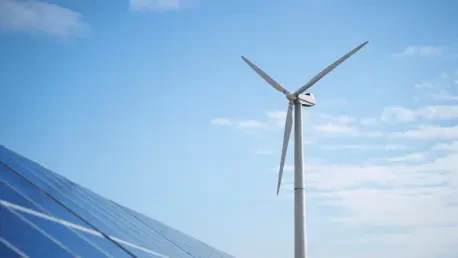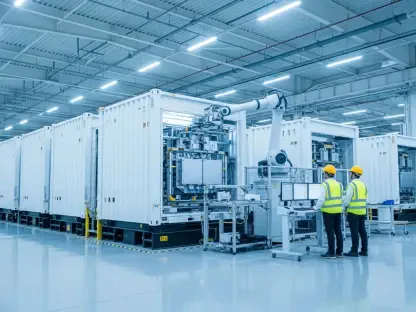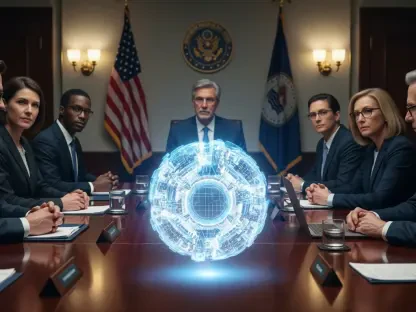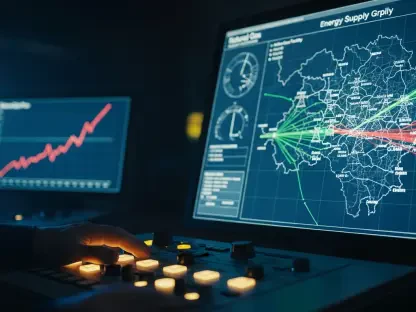Imagine a landscape where towering wind turbines and sprawling solar arrays power millions of homes, yet a single policy shift could alter their trajectory overnight. The U.S. Department of the Treasury has recently introduced updated guidance on tax credits for renewable energy projects under the 45Y and 48E programs, redefining how developers qualify for these vital incentives. With deadlines looming and criteria shifting, the renewable energy sector stands at a critical juncture. This roundup gathers diverse perspectives from industry stakeholders, legal analysts, and policymakers to unpack the implications of these new rules. The purpose is to provide a comprehensive view of how the transition to the “Physical Work Test” and other changes might reshape wind and solar development, offering clarity amid uncertainty.
Understanding the Treasury’s New Guidance
The latest Treasury rules have moved away from the previous 5% cost threshold for proving construction start, introducing instead a “Physical Work Test” that demands “physical work of a significant nature.” This applies to most wind and solar projects, with an exception for smaller solar facilities under 1.5 MW, which can still rely on the cost metric. The guidance, effective for projects starting construction on or after September 2, also ties eligibility to a key deadline of July 5, 2026, as set by the One Big Beautiful Bill Act (OBBBA), after which tax credits phase out for projects not in service by 2027. This shift has sparked a wide array of reactions, as the lack of a fixed minimum for “significant” work introduces subjectivity into project planning.
Diving into various viewpoints, industry leaders have expressed concern over the ambiguity of what constitutes significant progress. Many note that this change could complicate timelines, especially for larger projects needing to demonstrate tangible advancements before the cutoff date. Legal analysts, on the other hand, highlight that while the market has operated under similar physical work criteria in past frameworks, the current lack of clear benchmarks might still deter investment. This roundup aims to synthesize these perspectives to shed light on navigating the evolving regulatory landscape.
Industry Voices on the Physical Work Test
Developers Weigh in on New Challenges
Feedback from developers across the renewable sector reveals a mix of frustration and cautious adaptation to the Physical Work Test. Many argue that moving away from a clear financial metric to a subjective evaluation of physical progress creates uncertainty in project scheduling. There’s a shared concern that without defined standards, proving construction start by the critical 2026 deadline could lead to disputes or delays in securing tax credits.
Some developers, particularly those handling large-scale wind farms, point out that the flexibility of no fixed minimum might allow for creative approaches to demonstrating progress. However, they also stress that this same flexibility could backfire if regulators interpret “significant” work too narrowly. The consensus among this group leans toward a need for more detailed guidance to avoid missteps in the rush to meet deadlines.
Solar Advocates Highlight Risks to Growth
Representatives from the solar industry have been vocal about the potential downsides of the new rules. A prominent concern is that the ambiguous criteria might disproportionately affect smaller or community-based solar projects, which often operate on tighter budgets and timelines. Advocates argue that this could raise costs for end consumers if projects stall or fail to qualify for incentives.
Contrasting opinions within the sector suggest that while larger solar developers might have the resources to adapt, the broader impact on market confidence remains a worry. The fear is that regulatory hurdles could slow the momentum of solar expansion at a time when clean energy adoption is critical. This perspective underscores a push for clearer definitions to safeguard growth in this vital area.
Political Perspectives on Renewable Energy Policy
Lawmakers Debate the Path Forward
Political reactions to the Treasury’s guidance reveal a deep divide over the future of renewable energy incentives. Some senators, particularly those from energy-producing states, have endorsed the rules as a balanced approach, suggesting that they provide a workable framework for wind and solar industries to meet national energy demands. Their optimism centers on the idea that tangible progress requirements ensure accountability in how tax credits are allocated.
On the flip side, other policymakers criticize the guidance as a product of backroom deals aimed at curbing clean energy support. They argue that stricter construction rules undermine the original intent of legislation meant to boost renewables, potentially stifling innovation. This tension reflects broader ideological battles over fiscal policy and the role of government in energy markets.
Regional Influences on Policy Shaping
Regional dynamics add another layer to the political discourse surrounding these rules. Lawmakers from areas with significant renewable infrastructure often advocate for leniency in interpreting the Physical Work Test, citing the economic benefits of sustained project development. Their stance emphasizes job creation and energy independence as key reasons to ease regulatory burdens.
Conversely, representatives from regions less tied to renewables sometimes push for tighter controls, framing tax credits as a fiscal burden. This split highlights how local interests shape national policy, with some arguing that the Treasury’s stance is a compromise between these competing priorities. The resulting debate continues to influence how the guidance is perceived and implemented across different states.
Legal and Financial Insights
Analysts Assess Regulatory Ambiguity
Legal professionals analyzing the new Treasury rules offer a tempered outlook on their implications. Many note that while the shift to a physical work standard isn’t entirely new—having historical precedent in pre-Inflation Reduction Act frameworks—the current ambiguity around “significant” work poses challenges for compliance. They suggest that developers will need robust documentation to mitigate risks of misinterpretation by regulators.
From a financial angle, there’s concern that uncertainty could cool investor enthusiasm, especially for projects nearing the 2026 deadline. Analysts point out that financiers may hesitate without clear assurance of tax credit eligibility, potentially slowing capital flow into the sector. Their advice centers on proactive engagement with legal counsel to navigate this gray area effectively.
Market Adaptation Strategies
Insights from financial experts also focus on how the market might adjust to these changes. Some believe that the brief window before the September 2 implementation date offers a chance for developers to finalize projects under older, more predictable rules. This short-term opportunity could spur a rush of activity, though it also risks overburdening resources if not managed carefully.
Longer-term strategies include building stronger partnerships with regulatory bodies to clarify expectations around the Physical Work Test. Experts emphasize that past adaptations to similar IRS guidelines show the industry’s resilience, suggesting that with time, standardized practices may emerge. This forward-looking approach aims to balance immediate hurdles with sustained growth prospects.
Key Takeaways from Diverse Stakeholders
Synthesizing the range of opinions, it’s clear that the Treasury’s pivot to the Physical Work Test marks a significant shift for wind and solar projects, with reactions spanning from cautious support to sharp criticism. Policymakers see it as a way to ensure meaningful progress, while industry advocates warn of potential setbacks in clean energy goals due to unclear standards. Legal and financial perspectives highlight manageable risks but stress the need for precision in implementation.
The lack of a fixed minimum offers flexibility, yet it also fuels uncertainty, as developers grapple with subjective benchmarks. Comparing these views, a common thread emerges: the need for dialogue between all parties to refine the rules. This roundup illustrates that while challenges loom, the collective input from various sectors provides a roadmap for addressing them.
Reflecting on a Path Forward
Looking back, the discussions surrounding the Treasury’s new rules revealed a complex interplay of innovation and regulation in the renewable energy landscape. The varied opinions from developers, advocates, policymakers, and analysts painted a picture of an industry at a crossroads, striving to balance growth with evolving standards. Each perspective contributed to a deeper understanding of how these changes reshaped project planning and market dynamics.
Moving ahead, stakeholders were encouraged to prioritize meticulous documentation of physical progress to secure tax credits under the new criteria. Engaging with legal experts to interpret ambiguous guidelines became a critical step, as did advocating for more precise definitions from regulators. Fostering ongoing collaboration with policymakers stood out as an essential action to ensure that future adjustments aligned with the sector’s needs, paving the way toward a more stable and supportive environment for clean energy development.









